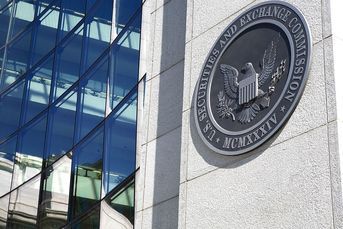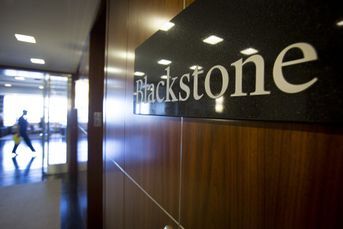Good work: Finra employees make double industry pay
The average compensation for Finra's 3,400 employees last year was nearly double that of the average worker on Wall Street. Bruce Kelly takes a look at the numbers. Plus: Finra trims operating loss but comp costs climb
If I return to this world in a future life, I will make sure to come back as a regulator with the Financial Industry Regulatory Authority Inc.
That’s kind of sad, because when I was a kid all I wanted was to grow up and play second base for the New York Mets. But the pay and benefits at Finra, the securities industry’s self-regulatory organization, are so lofty that it makes the dreams of youth well worth deferring.
Indeed, the average Finra employee does far better in terms of compensation and benefits than someone who works in the securities industry, which I cover for InvestmentNews.
According to Finra’s 2013 annual report, which was issued last Friday, the average compensation and salary for the 3,400 Finra employees last year was $197,000, excluding certain severance and pension costs. That’s pretty sweet, particularly as it practically doubles the mean wage earned at all 167 occupation titles listed in the 2013 “Securities and Commodity Contracts Intermediation and Brokerage” wage estimates tallied by the Bureau of Labor Statistics.
Of the 442,670 employed in those various jobs, from CEOs to mail clerks, the mean wage was estimated to be $100,180, according to the 2013 report. The report was “calculated with data collected from employers of all sizes, in metropolitan and nonmetropolitan areas in every state and the District of Columbia.”
(At Finra, compensation was a big expense in 2012 too: Finra hampered by rising compensation costs, stagnant revenue)
Employees in the securities industry, particularly at larger firms, receive a large part of their overall pay in year-end bonuses, making a straight comparison between Finra’s average compensation and the industry’s annual mean wage less than perfect. The industry annual mean wage of $100,180 is diluted by the fact that the brokerage industry, like lots of businesses, still hires scads of recent college grads to work for a pittance.
Broker-dealers have also grown a lot leaner in recent years, with automation replacing people. That accounts for fewer employees making higher salaries. And star brokers still make $500,000 to $1 million — or more — annually.
Finra’s compensation and benefits spending continued to climb last year. While staffing levels held steady, Finra paid out $700.3 million in compensation and benefits in 2013, compared with $628.9 million in 2012. Year-over year, average salaries at Finra were up 6.5%.
As a percentage of overall expenses, compensation reached 70%, up from 63% in 2012.
Will compensation at Finra in 2014 reach 75% or 80% of its expenses? How much of the budget will be left to fulfill the SRO’s mandate to protect investors?
Finra paid four of its top 10 executives more than $1 million in 2013. CEO Rick Ketchum’s total compensation was $2.6 million. Todd Diganci, executive vice president and chief financial officer, made $1.2 million. Susan Axelrod, executive vice president for regulatory operations, earned $1.013 million, while J. Bradley Bennett, executive vice president of enforcement, made $1.064 million.
The securities industry is far from thriving, making the pay disparity even more puzzling. The stock market is at record highs, but the number of broker-dealers continues to shrink, falling 14.5% in the past four-and-a-half years. Top MBA graduates would rather work at an entrepreneurial technology start-up than climb the corporate ladder at an investment bank.
Finra, meanwhile, continues to post operating losses. In 2013, it was $73.4 million, compared with $89.2 million the year before. On a positive note, its total assets increased $68.1 million — or 3.2% — to $2.26 billion in 2013. Net income last year was $1.7 million, down from $10.5 million in 2012, due to lower investment performance.
Finra could have “a higher mix of higher paying jobs, or a higher proportion of jobs in New York or other expensive locations,” said Andy Tasnady, a compensation consultant. That’s why a more common way of comparing pay at companies and organizations is to look at the top five earners rather than the average or mean wage.
However, the comparison gives a snapshot as to how out-of- whack compensation is between the primary securities regulator and the 4,142 broker-dealers it oversees.
(See Bruce Kelly’s analysis of Finra’s 2012 results)
“The line item in our financial report encompasses much more than straight salaries,” wrote Finra spokeswoman Nancy Condon in an email to InvestmentNews. “It includes benefits, many of which increase in cost yearly. Those include medical, dental and vision benefits; employer-paid pension and 401(k) contribution; employer-paid portion of taxes, life insurance and others.”
Ms. Condon added that the data used in the Bureau of Labor Statistics figures include positions such as tellers, food preparation- and serving-related occupations, heavy tractor-trailer truck drivers and others. Those jobs “are not relevant to Finra or the securities industry.” Comparing Finra’s average annual compensation and benefits per employee to the annual mean wage was “an apples-to-oranges comparison,” she wrote.
“The fact of the matter is that Finra must compete with the securities industry when attracting, and especially retaining, workers who have the necessary regulatory training, expertise and knowledge,” Ms. Condon wrote. “Our salaries must be competitive to keep the highly skilled individuals that Finra employs.”
The disparity raises significant questions for Finra and Mr. Ketchum. Should the cop on the beat earn almost twice as much the people it polices, or does that stark difference in compensation cause a severe disconnect between the regulator and the regulated?
Furthermore, is the compensation bounty at Finra deserved? The SRO has recently faced intense scrutiny about holes in its reporting on backgrounds of registered reps in its premier system, BrokerCheck. Those omissions leave investors vulnerable to brokers who have work histories laden with potential red flags such as personal bankruptcies and tax liens more than a decade old. It takes Finra years to get seemingly simple rules approved by the Securities and Exchange Commission, again hindering its ability to protect investors.
After thinking about these numbers, I take it all back. If I am blessed with a second chance at life, pencil me in for second base with the New York Metropolitans. I couldn’t hack it at Finra.
Learn more about reprints and licensing for this article.








